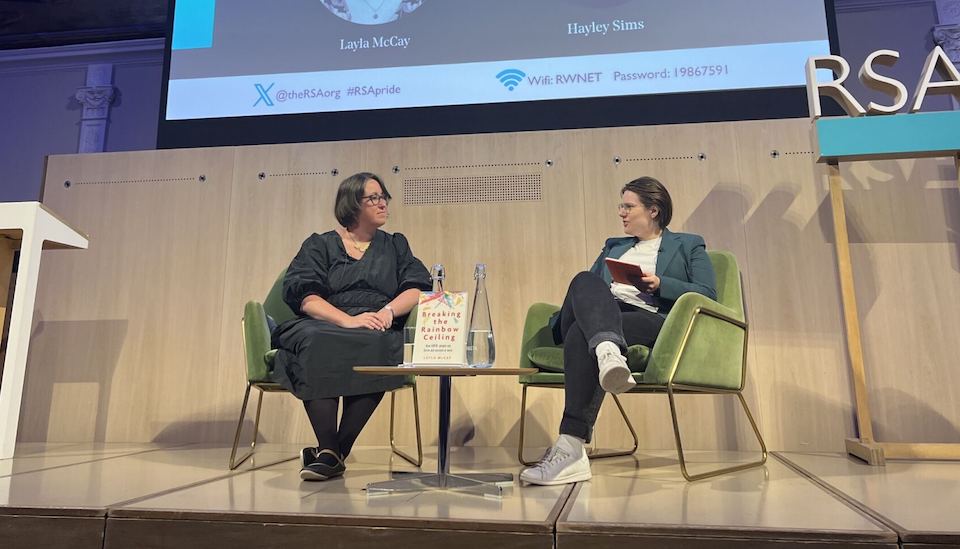Cultural theory and Kevin Pietersen
I have been trying to avoid Belinda Lester, our Director of Fellowship. As an Australian she thinks the meltdown of English cricket a few months before the Ashes series is a subject for endlessly amusing badinage. Fortunately, I have developed a clever defence mechanism. My RSA colleagues, like I’m sure my blog readers, have become heartily sick of me banging on about cultural theory.
So, in the Gerard Bar this morning when Belinda told me she used to be Kevin Pietersen’s next door neighbour, I pre-empted further mickey-taking by offering her my cultural theory of his downfall. Suddenly, she remembered an urgent meeting on the fourth floor…
Cultural theory’s three active modes for social relations – the hierarchical, the individualistic and the egalitarian - are immediately apparent in the Pietersen episode. KP himself is the classic individualist. For him what changes the world – and what wins cricket matches – is individual drive and talent. You’ve either got it or you haven’t. KP has, and he finds it hard to respect others who lack what he sees as the only legitimate basis for leadership. He has consistently rebelled against hierarchical authority based not on individual merit but on order and rules.
England coach Peter Moores represents hierarchical authority. This is a model of change in which the system matters as much as the individuals. Moores himself may not have been a great cricketer, but he can achieve success through organisation and applying the right rules and techniques. He stands for the authority of the cricketing establishment. For him to be openly challenged is a threat - not just to his own status, but to the hierarchical culture as a whole.
‘The dressing room’, aka the rest of the team, represents the egalitarian voice in this drama. The repeated call from this quarter is for Pietersen and Moores to put aside ego and power struggle in favour of ‘the good of the team’.
In attributing these roles cultural theory does not seek to diagnose personalities. In other parts of his life and at other times KP may be a rigid hierarchist or a soggy egalitarian. The point is, first, that in organisational conflict of this kind the hierarchical, individualist and egalitarian perspectives are bound to be somewhere at play and second, as cultural theory emphasises, each perspective draws its power from its critique of the others.
The individualist view tends to see hierarchy as second rate, out of touch and self serving. The hierarchical view sees individualists as dangerous and morally dubious. Egalitarians close ranks, warning of impending disaster and bemoaning the lack of solidarity and self denial amongst those who don’t share their values.
KP lost out because he failed to find any common ground with either the hierarchy or the team. This was tactically inept. The hierarchists and egalitarians have now joined ranks, abandoning the individualist and trying to move on. But this is made problematic by the context of the conflict; the public believe Pietersen’s individualism is necessary for victory. KP’s decision to stay in the team may be driven by his love of the game but it may also be that he still thinks he can win.
There were two ways the meltdown could have been avoided. If KP had carried the team he could have seen off the hierarchy. But he lacked the inclination or skills to do this. Or, if there had been an honest broker armed with cultural theory, she might have tried to get each party to reconcile their own perspective with the need for all three ways of seeing things to be recognised and engaged with.
Crucial to such a resolution is for the adherents of each view to feel secure that the strength of their own stance does not depend upon them attacking the others. For example, the rest of the team will always feel some distance from a charismatic captain – and some scepticism towards hierarchical authority - but this can be expressed through player solidarity without having to become a dressing room rebellion.
When the three active perspectives clash so disastrously the space grows for the triumph of the fourth perspective; fatalism; ‘It doesn’t matter what happens, England always find a way of blowing it’. Which is, more or less, what Belinda said to me as she left the Gerard Bar.
*********************
Over the festive season I wrote two week long series of blogs. This seemed to go down OK so next week I plan to do the same, with the focus being my interpretation of cultural theory and how it can be applied by practical policy makers and managers.
Related articles
-
Prosperous Places: creating thriving communities
Tom Stratton
With regional growth at the top of the agenda, it is vital that we create thriving communities across economic, social and natural perspectives. Prosperous Places is a suite of interventions aimed at responding to the unique ambitions and challenges of places.
-
Pride interview: Felipe Tozzato
Deborah Ajia
The commercial photographer and RSA Fellow explains what Pride means to him, the importance of courage, making friends through rugby and why being gay is his superpower.
-
Let's smash the Rainbow Ceiling
Ben Oliver
Reflecting on Layla McCay’s recent RSA talk, Ben Oliver offers five ways for employers to create a positive culture for their LGBTQ+ staff that benefits both the individual and the organisation.




Be the first to write a comment
Comments
Please login to post a comment or reply
Don't have an account? Click here to register.